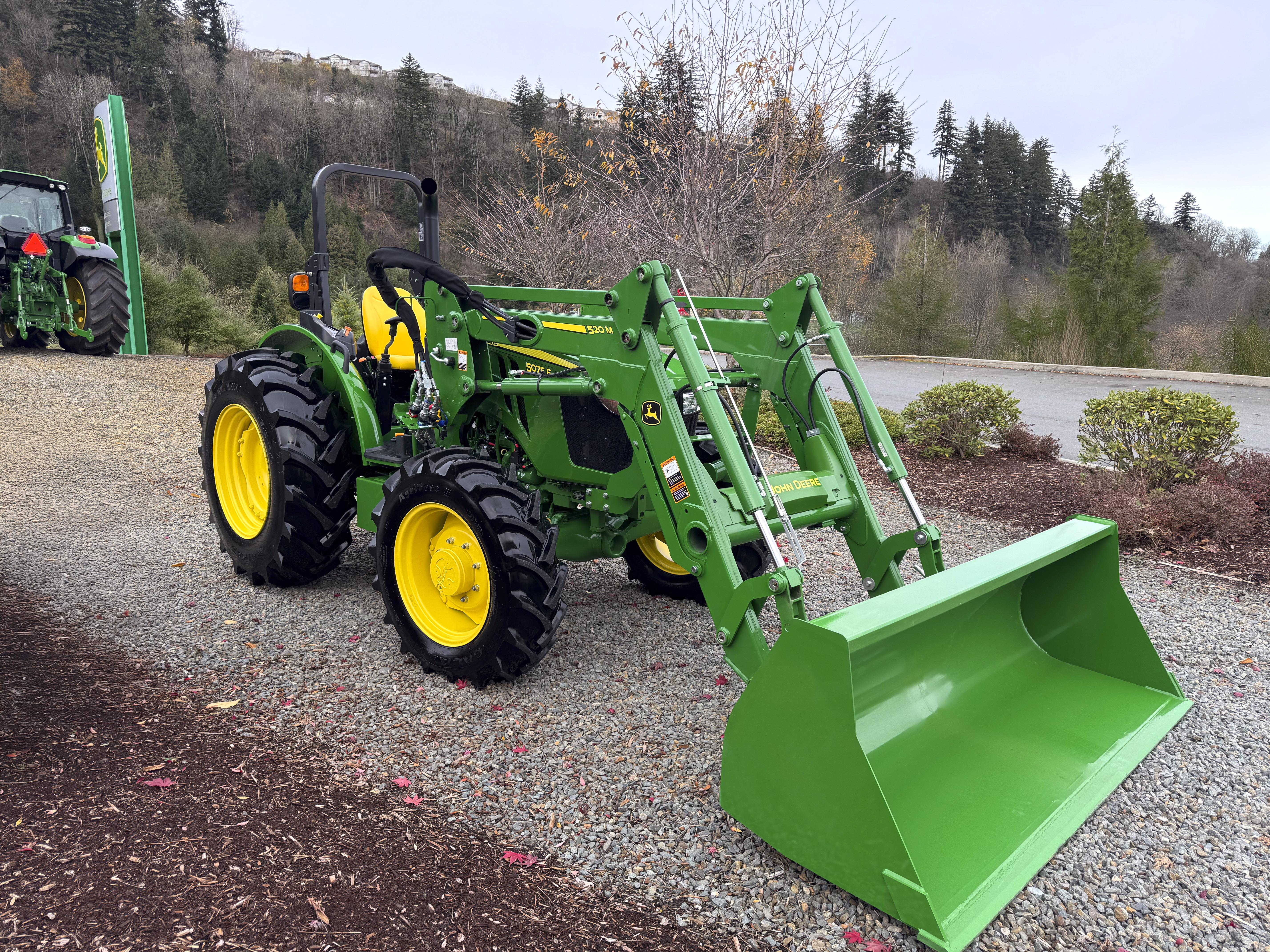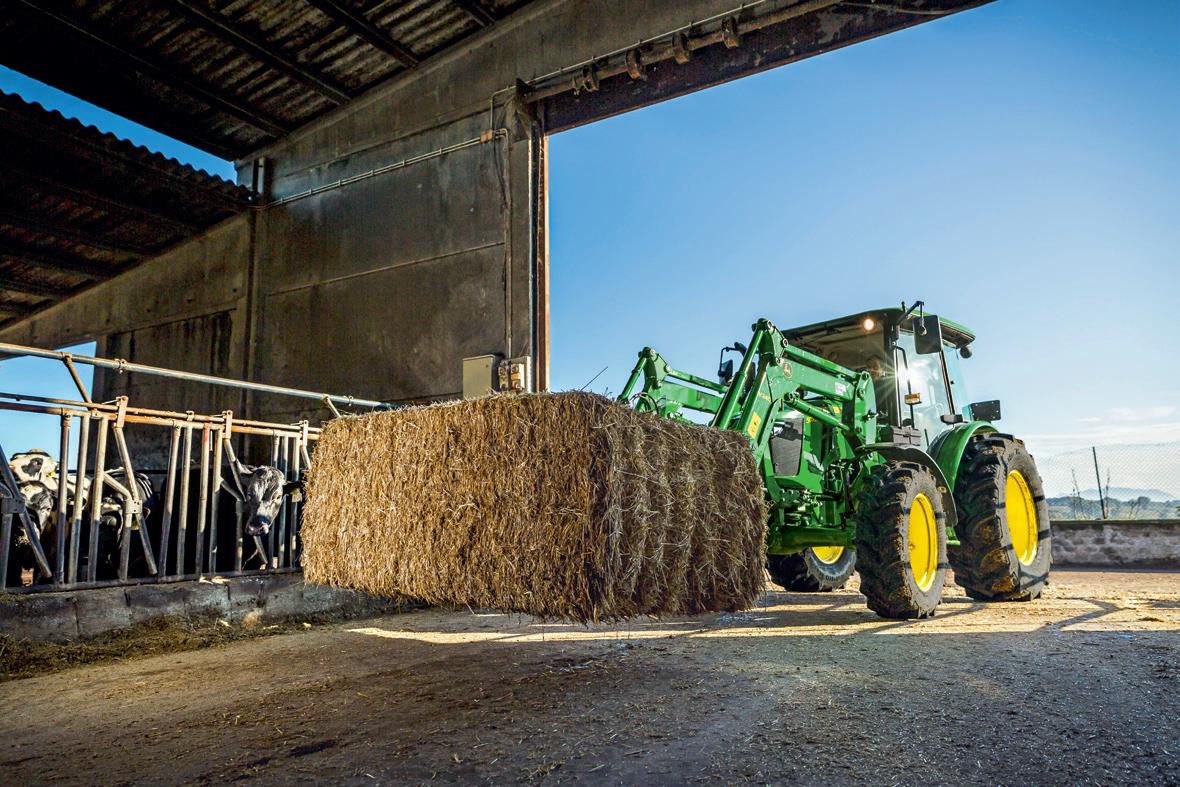

FARM GARDEN&
ISLAND FARM GARDEN&
Publisher: Cowichan Green Community
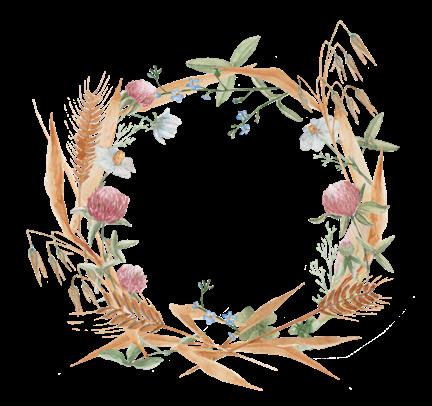
360 Duncan Street, Duncan, B.C. V9L 3W4
tel: 250.748.8506 fcowichangreencommunity.org
Editor: Ian Locke | editor@cowichangreencommunity.org
Thanks to our "experts in the field" for sharing their wisdom

by
As we stride into yet another beautiful summer on Vancouver Island, I find myself in awe of the beauty that we have the opportunity to live amongst. The place we are so fortunate to call home is a truly unique environment worthy of praise and protection.
Find us at hundreds of locations on the Island, including all VIRL branches, medical centres, coffee shops and these fine establishments.
When considering the current events of the world today, the mission of the Cowichan Green Community has never been more relevant. From their food recovery practices, community garden spaces, to the reFresh Market, providing dignity in a shopping experience for those with lower incomes, the CGC is doing important work.
With only my second go-around as editor of Island Farm & Garden, I am proud to be a part of this mission and its implementation. This magazine provides an important and accessible platform for community members to share important stories and knowledge to keep us all thriving and engaged.
On a personal note, while I have always had a keen interest in plants and gardening, and food sustainability, this is the first year I’ve been able to live in a house with a yard and spaces to grow my own food. So far, having fought back an overgrowth of weeds, I’ve been able to start a modest herb garden and look forward to planting some squash, onions, and garlic. Looking through the archives of this magazine since taking over as editor, I’ve already garnered many tips on how to be successful.
With a strong legacy behind its back, I hope this project will continue with even more support and growth across multiple platforms from our many wise and valued contributors.
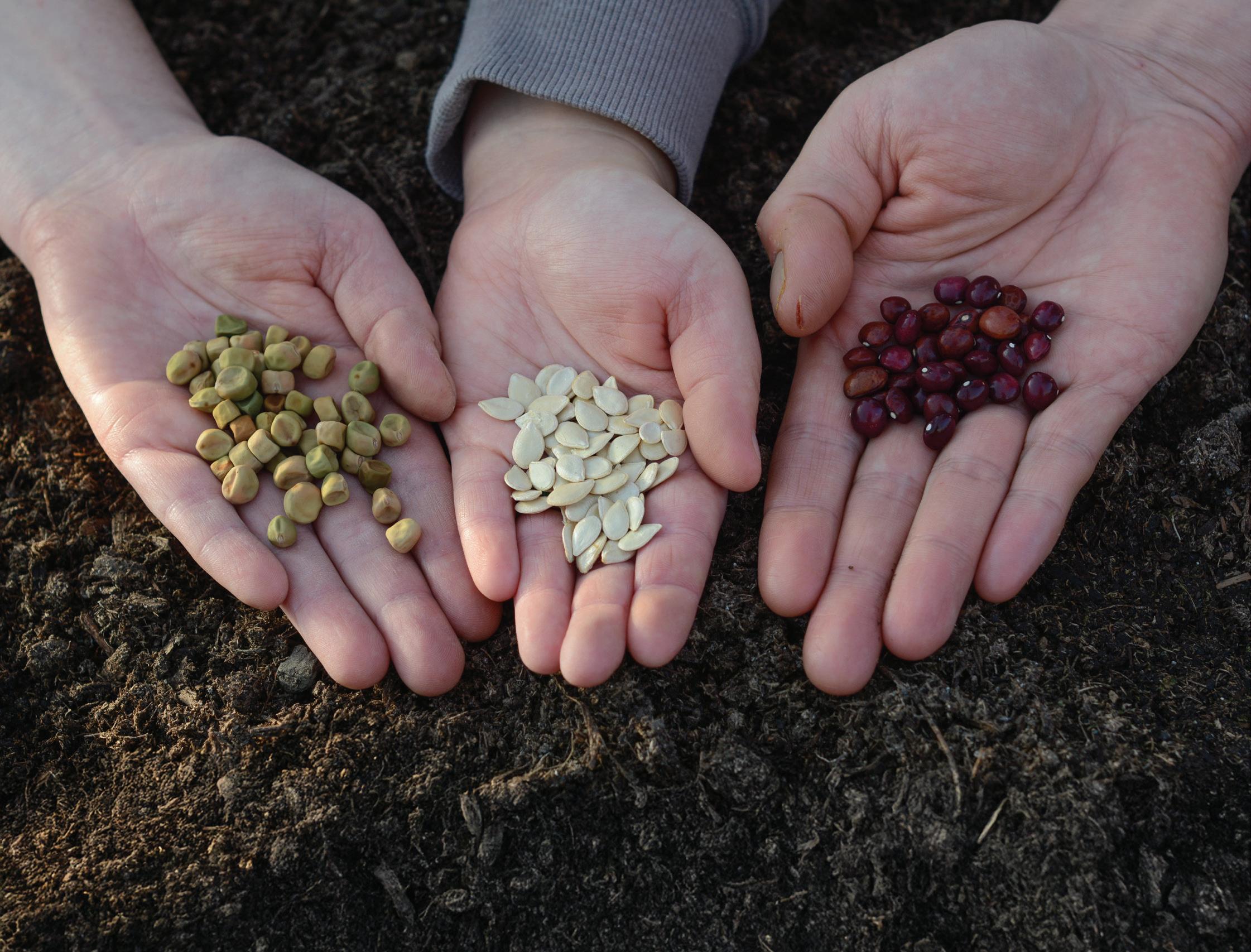
WE’RE GROWING!
Cowichan Green Community
The BEVERLY STREET FOOD HUB – Cowichan Green Community
The Beverly Street Food Hub – A Cowichan Green Community (CGC) Initiative was founded to support local food producers and processors with a focus on BC-grown ingredients. Located on a 3.5-acre site in North Cowichan B.C., the new Beverly Street Food Hub is the future home to the reFRESH marketplace, teaching farm, plant nursery, seed library, and community gardens. It will include a shared-use kitchen and distribution warehouse dedicated to food processing and innovation.
Our advertising family is growing as more and more of our 10,000
Until next time, thank you for the opportunity to be your editor. "Happy Gardening!"

Ian Locke, Editor photo: Ian Locke
Bird Bath Bogging





by Lynda Senior, photos supplied
The annual ‘Plantaholics’ sale in Brentwood Bay sounded intriguing: so I, accompanied by a fellow lover-of-allthings-green, drove up West Saanich Road and turned left on Benvenuto to park. A line-up had already formed along the verge well before the ten o’clock start time. People looked impatient, and I felt, oddly, that something special was about to happen. The gate rolled open; the shoppers entered and scattered every which way. Everyone was in a big hurry.

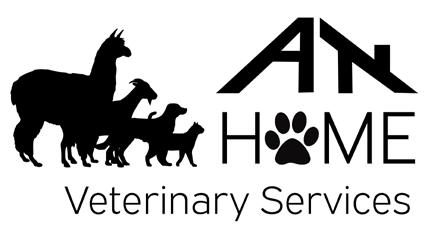

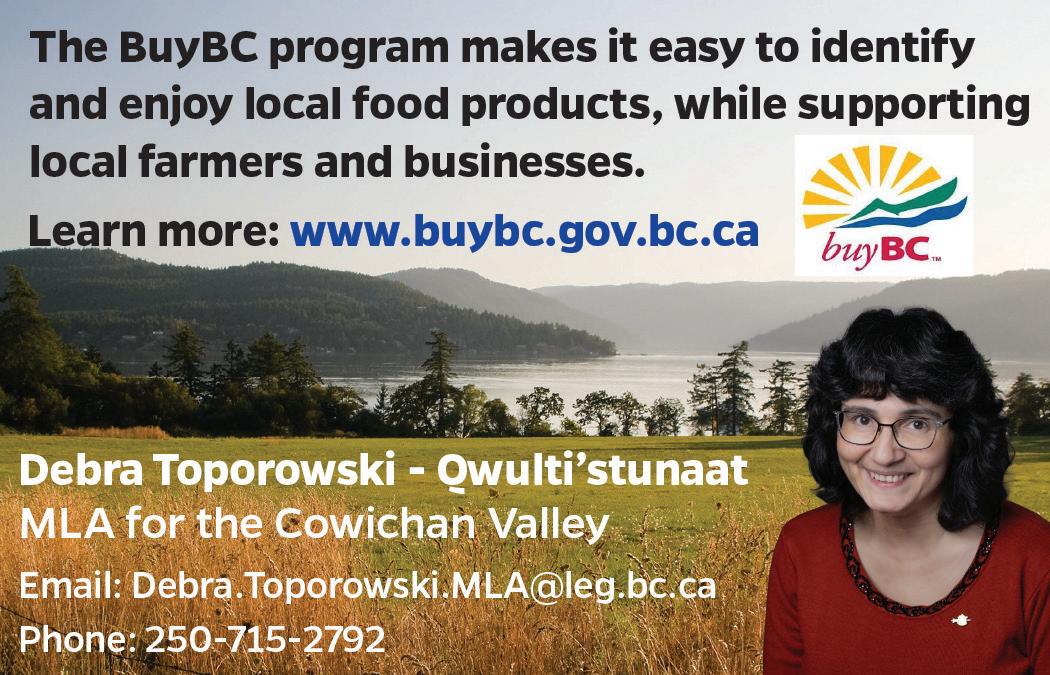
Lynda's Bird Bath Bog with its Sarracenia trumpets extending upwards
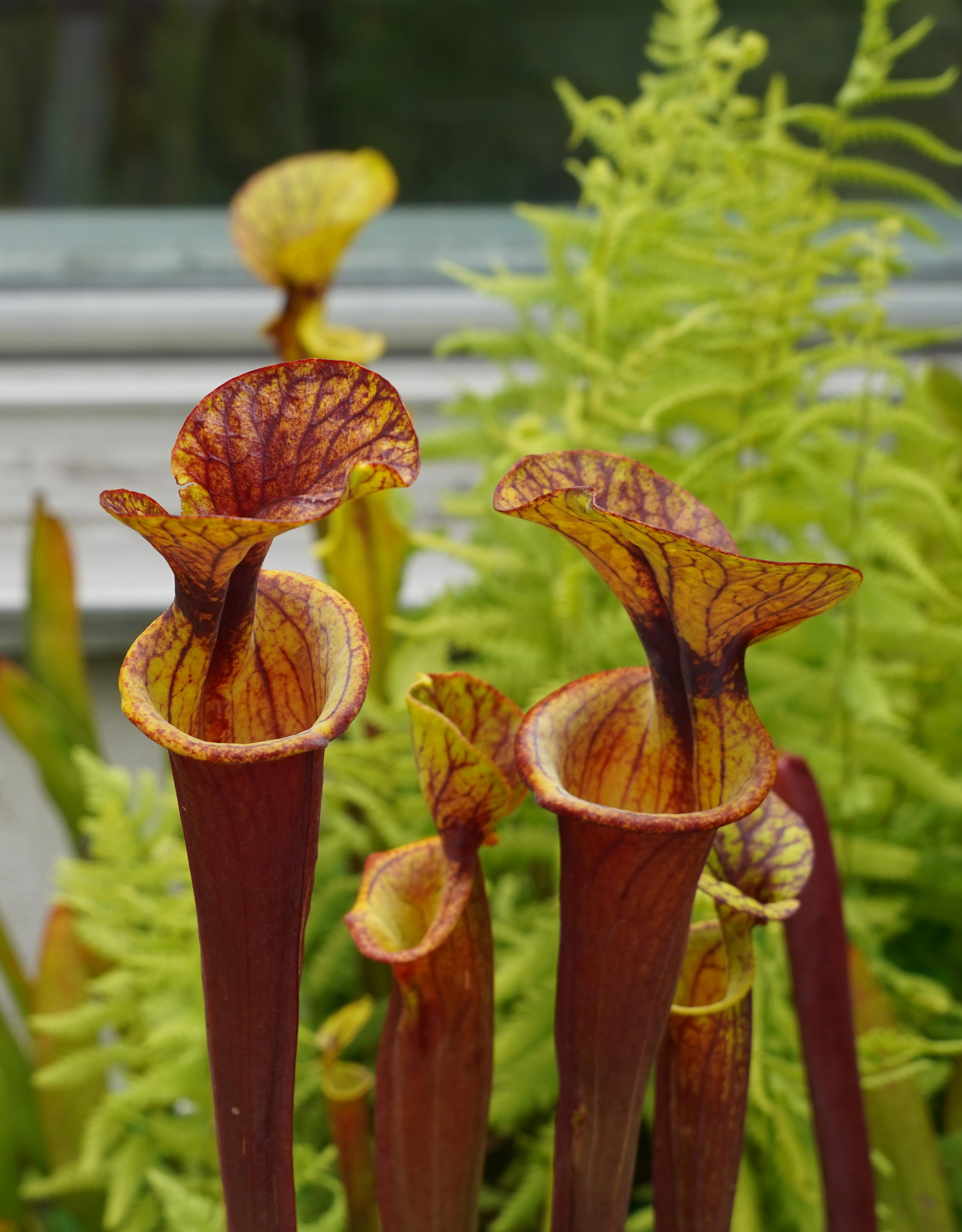
I, a first-timer, scanned the many market booths, and one in particular caught my eye. The lime-green stalks of tall Sarracenia formed a brilliant landscape that was moving in the breeze along the surface of the presentation tables. As I moved closer, I noticed that some of these seemingly delicate plants were striped and had purple frilly tops. They looked like alien plant life as they swayed back and forth.
A crowd formed quickly around this appealing venue. Many people were enquiring about these unusual plants. I listened, rapt, as others received detailed information from a very knowledgeable and loquacious seller. Sarracenia is commonly known as ‘Pitcher Plants.’ They are carnivorous, surviving mostly on flies which are attracted by a sweet substance produced on the trumpet-like stems. Hairs inside the trumpets are slanted downwards so that once an insect enters the long tube, it cannot get back up to the top. Slow digestion of the unfortunate bug nourishes the plant. This unique plant sounded like more fun than anything else growing in my garden!
I learned, too, that Sarracenia lives in bogs and must be in water. And they need at least four hours of direct sunlight each day. Surprisingly, they are winter-hardy. “Hmmmmm”, I thought to myself, “Not sure about that one...”
They were pricey, so I decided to purchase just one to test. The $15 investment for a small 4” plant, turned out to be a very good idea. My new Sarracenia had one small trumpet, and several new shoots just starting to grow. And I had an idea: I would create a bog in my birdbath!
After some thought, I started by placing the plant in its original 4” plastic pot into the empty birdbath, with just the bottom standing in water. Some coloured stones and several small birch fire logs surrounded and stabilized the container pot within the birdbath. Windfall leaves were left as they fell. Moss, lichen, and fungus began to grow on the partially submerged logs. Water was replenished daily.
To my great surprise, the trumpets grew and grew! Soon, I had seven 8” tall tubes. And I could not believe how they filled up with flies - big fat flies lured into the neverland of Sarracenian death trumpets. I was really enjoying the whole experience - this plant was actually entertaining! All summer, and well into the autumn months, the fly-drama continued.
When it was time to tuck away the larger garden for the winter, I was unsure of what to do with the bird bath bog I’d created that spring. I decided to let nature take its course, and left the whole soggy creation to the elements. The bowl filled up with fallen leaves, overflowed in the rain, iced over at minus 4 degrees, and was buried under 15” of snow at one point during the winter months. I was sure that my bird bath bog Sarracenia would not make it through such brutal conditions. But it DID survive! In March, a much-anticipated green growth spot appeared, followed by several shoots of leaves, and then, slowly, the trumpets emerged, taller than last year. There was even a flower by the end of May!

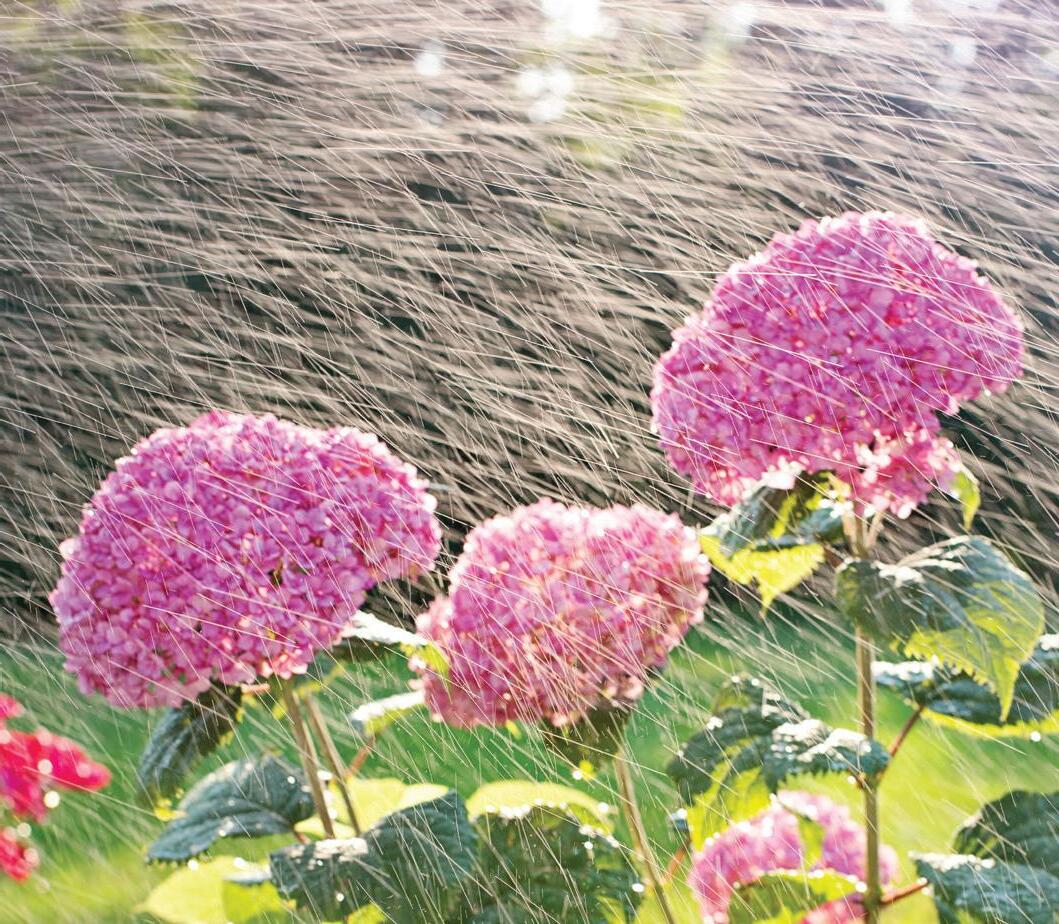

A close up shot of a Sarracenia plant
I was thrilled!
At this point, I had become a dedicated Plantaholic. I returned to the same sale this spring and purchased several taller Sarracenia varieties for this year’s in-garden bog. These have added further interest to my expanding bird bath garden feature. I also surrounded the tilt-prone newbies with extra rocks and some special dried branches I’d saved for landscape arrangements. Check out the picture!
I’m really enjoying a second Sarracenia Summer, and I plan to continue creative ‘bird bath bogging.’ It’s actually easy and fun to include such a unique feature in any garden. And, importantly, the flies will love it!

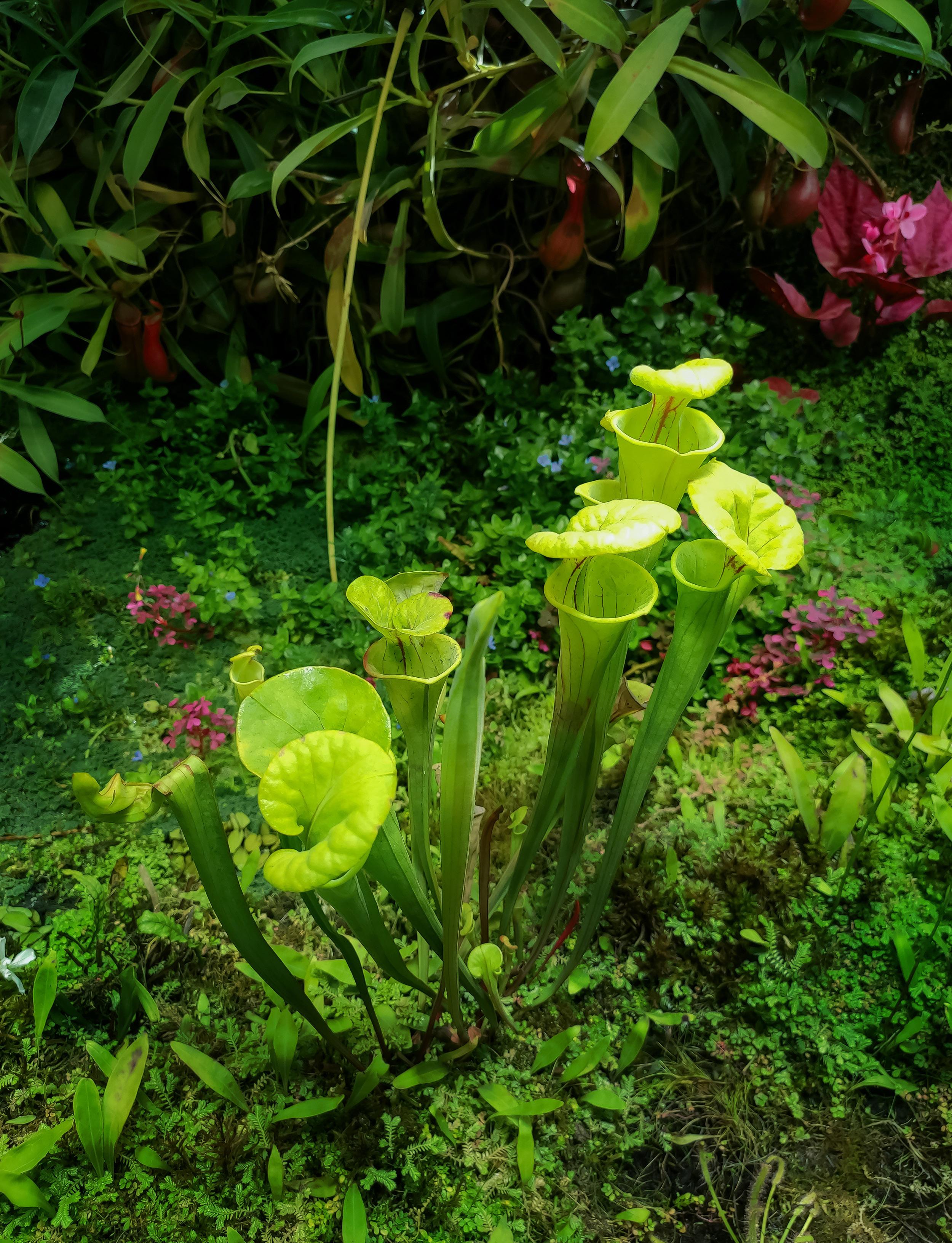
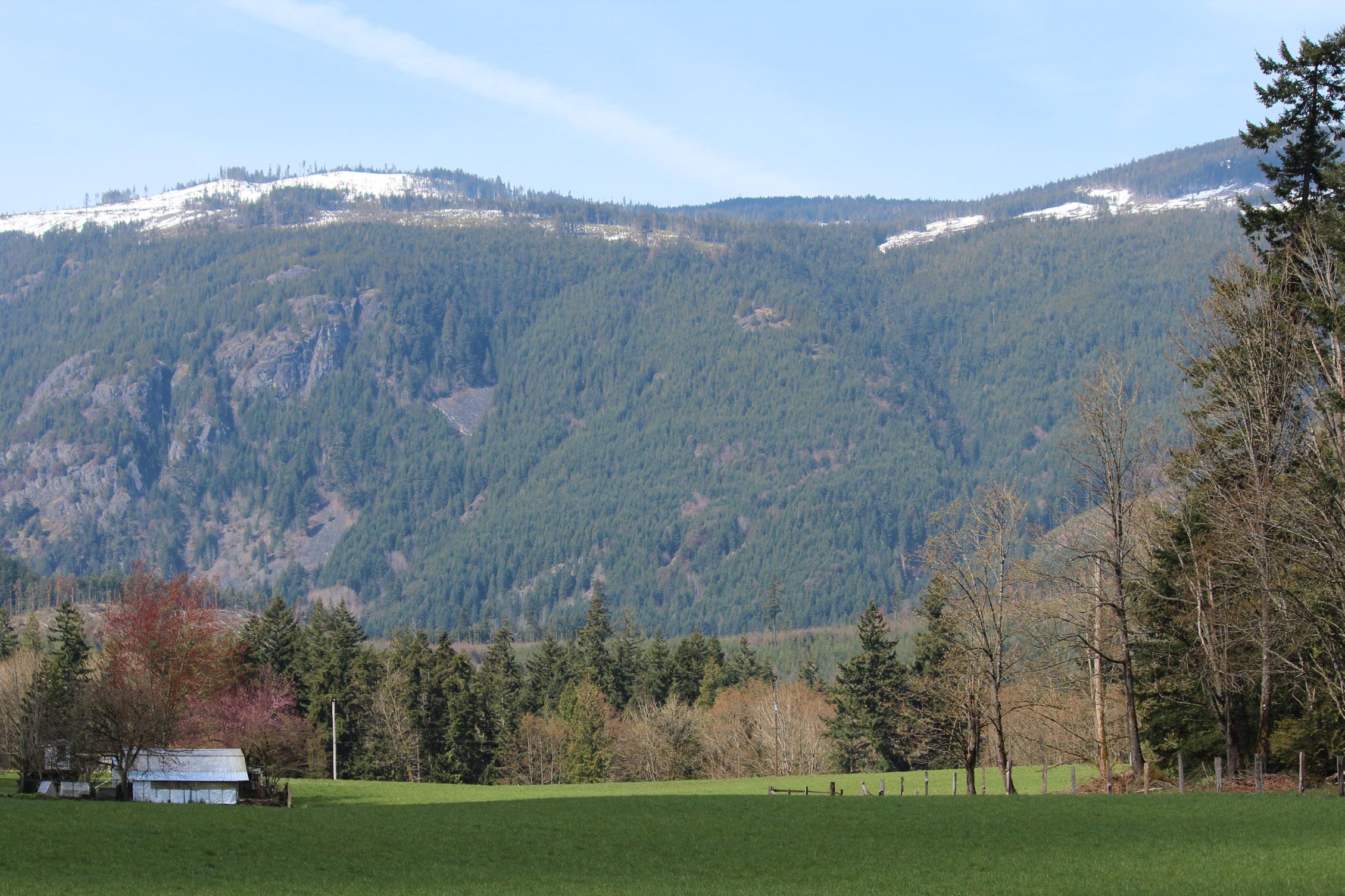
Growing New Farmers
Cowichan Green Community Presents a New Agricultural Training Program
by Karissa Hurl, photos supplied
The importance of local agriculture in promoting the health and wellbeing of our communities is becoming more and more evident in the modern world. In addition to many other agricultural products, the ability to produce fresh, locally grown fruits, vegetables, meats, and plant medicines strengthens our regional food systems and fosters our relationship with the land and one another. Local food production is not just a lifestyle choice but a necessity in the face of supply chain disruptions, climate change, and global uncertainties.
Cowichan Green Community (CGC) is excited to introduce a brand-new Agricultural Training Program in response to this growing need. It is intended for community members who are looking to actively participate in creating a more resilient and sustainable food future. This extensive, 36-week program will start on June 30, 2025, and end on March 13, 2026. Though this is currently a one-time initiative, the impact it aims to make is longlasting.
The program is entirely free for participants as it is fully funded by the Province of British Columbia and the Government of Canada. This opportunity offers an accessible entry into the thriving agricultural industry, blending comprehensive education with paid work experience.
Eight participants will work closely with nearby farms and
agricultural producers throughout the Cowichan Valley during the work placement portion of the program, gaining real-world experience and practical skills. The 14-week on-farm work placement is a crucial element, during which participants will be mentored by seasoned farmers, many of whom supply produce to nearby markets and retail establishments. In addition to imparting technical skills, these placements offer priceless mentoring and an understanding of the challenges and benefits of farm life.
Participants will also receive classroom instruction and on-site training at CGC's Beverly Street Food Hub and KinPark Urban Youth Farm, two community-run locations that are essential hubs for sustainable growing methods and local food education. In addition, the program offers several workshops through Vancouver Island University (VIU), field trips to nearby farms, and guest lectures from farmers and agricultural specialists.
Highlights of the education provided include taking part in specialized workshops like beekeeping and backyard chicken management, as well as receiving a Micro-Credential Certificate in Sustainable Soils Management from VIU. Amy Luck-MacGregor from Spring Hill Soil Laboratory will also share her extensive knowledge of soil biology with the cohort through compostbuilding and monitoring throughout the program. Through these distinctive experiences, participants develop a wide range of flexible skills based on both contemporary sustainable practices and traditional knowledge.
To guarantee participant success, the program provides supportive
services in addition to instruction and training. Each person will be given access to living supports, a personal laptop to keep, and necessary work equipment. This all-encompassing strategy promotes a strong sense of community among participants and helps to break down barriers.
At the end of the program, participants will have assistance finding employment in the local agricultural industry. The program aims to act as a springboard for new careers and lifelong learning in response to the Cowichan Valley's increasing need for skilled agricultural workers. Program Supervisor Karissa Hurl encourages local farmers and producers to get in touch with her if they would like to host work placements or hire graduates:
“We are very excited to be providing this potentially life-changing opportunity for our community and are hoping to foster a love of sustainable agriculture that will help inspire our participants to join the thriving agricultural landscape of the Cowichan Valley. By engaging the cohort in hands-on learning and theoretical knowledge, as well as by providing these necessary certifications and skills, we feel that the cohort will be well-equipped to find meaningful employment with local farmers. If you are a farmer or agricultural professional who would like to learn more about the program or the opportunities to be a Farm Host or speaker, or if you would like to meet the graduates towards the end of the program, please send me an email at karissa@ cowichangreencommunity.org or phone the office at 250-748-8506 and I’d be happy to chat further!”
This Agricultural Training Program reflects Cowichan Green Community’s long-standing commitment to food security, environmental stewardship, and community empowerment. By investing in the next generation of growers and agricultural workers, CGC is helping to cultivate not just food—but also knowledge, connection, and a more sustainable future for all.
For more information about CGC’s ongoing programs, as well as to see how we’re growing in our community, including our plans for building the new Beverly Street Food Hub, visit https:// cowichangreencommunity.org.



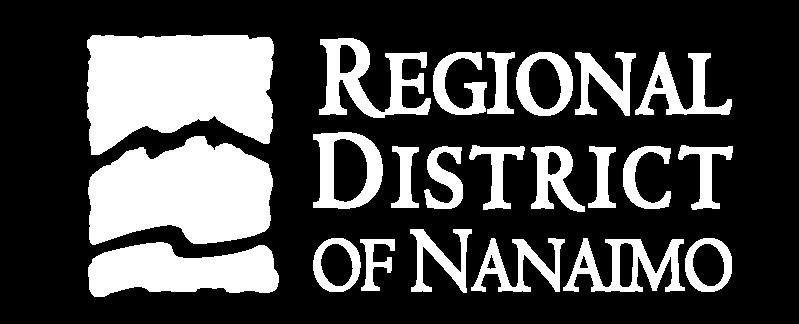



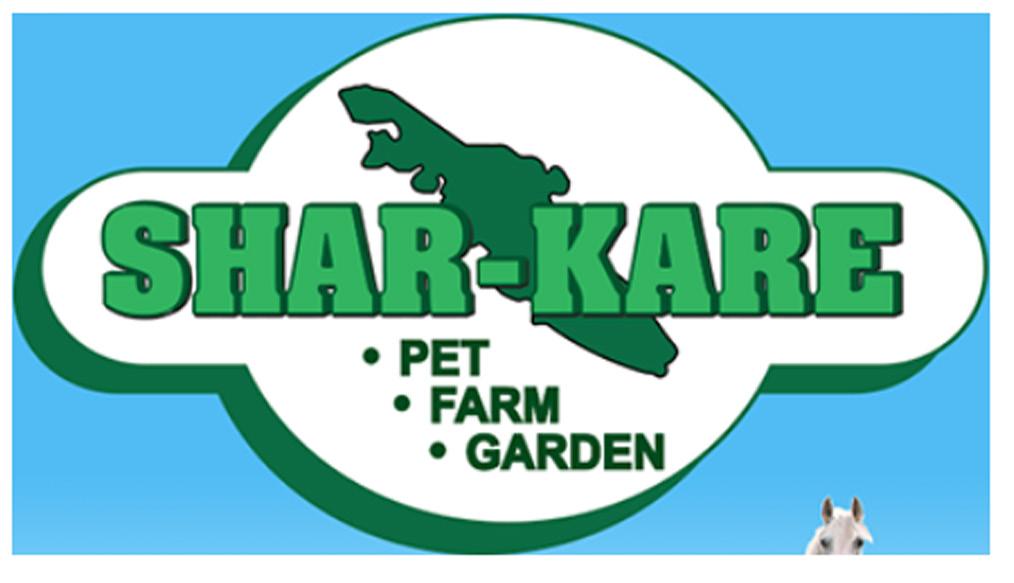

Microgreens
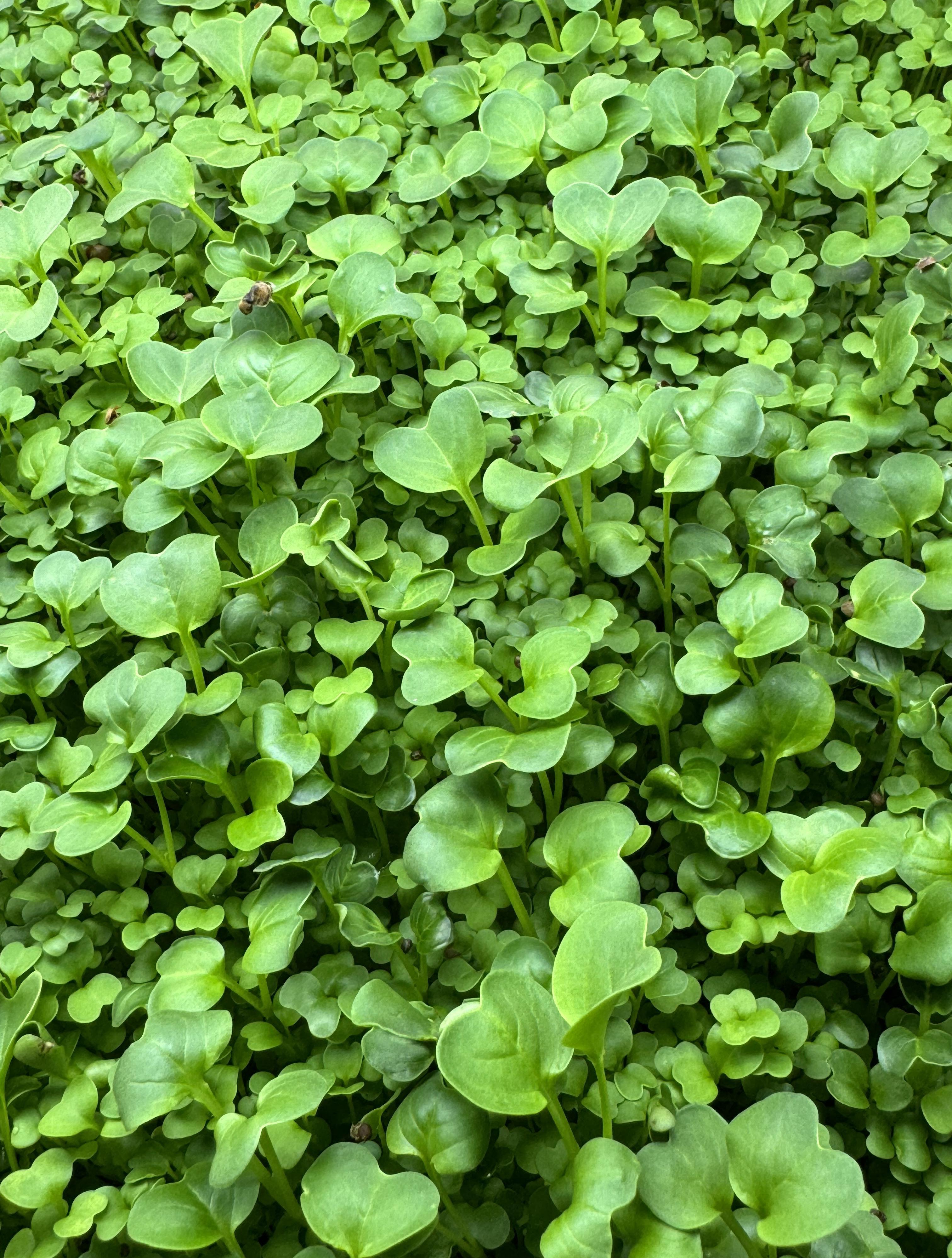
• A & S Microgreens (Cobble Hill): Offer over 40 varieties of microgreens grown indoors using non-GMO organic seeds and soil. They also produce freeze-dried fruit snacks made from 100% natural fruits without added sugars or preservatives (asmicrogreens.com)
• Eatmore Sprouts & Greens Ltd (Comox Valley): A familyrun business providing a wide variety of fresh, nutrientdense sprouts and greens, including alfalfa, garlic, sunflower, pea shoots, clover, and broccoli. Their indoor facilities and greenhouses allow for continuous production, supplying Western Canada with a variety of sprouts and greens. (eatmoresprouts.com)
• Sirius Micro Farm (Errington): Grow a variety of nutrientrich microgreens, including pea shoots, radish, broccoli blends, and mixes like Farmers Favourite and Beneficial Brassica. “Our Farmer’s Favourite is the favourite!” they shared. “It showcases a variety of microgreens, giving it a nice mild yet fresh taste and complements just about any dish. We’ve added triton and ruby radishes just for the pop of colour—because who doesn’t love some colour on their plates?” (siriusmicrofarm.com)
• Ultimate Microgreens (North Saanich): Grow fresh, healthy greens in a small indoor farm using organic practices. They offer home delivery in Sidney and North Saanich, and their blends, Ultimate Blend, Radish Blend, and Salad Blend, include Red Radish, Daikon, Purple Kohlrabi, Red Kale, Bok Choy, and others. (ultimatemicrogreens.ca)
What are microgreens, exactly?
Microgreens are harvested during the cotyledon growth stage— this is when the first set of true leaves begins to emerge. Unlike sprouts, which are typically grown in water and consumed whole (including the root), microgreens are grown in soil or a soil substitute like peat moss. The growing medium provides nutrients that help the plant develop flavour and nutrition. Microgreens are usually vegetable or herb seeds grown for 7 to 10 days before being cut just above the soil line for consumption.
• Vitamins! Up to 20x the vitamin content within a few days of sprouting.
• Enzymes! Up to 100x more enzymes than in raw veggies.
• Low calorie, high nutrition.
• Certified Organic and GMO-Free.
• Affordable. Adding them to your meals is an easy and inexpensive health upgrade.
And the benefits go even further. “They contain no sodium, fat, or other additives. For example, micro radishes, micro cabbages, and micro amaranth have high vitamin C, K, and E levels. In contrast, micro cilantro offers an abundance of carotenoids and a high concentration of lutein.” says Ionescu.
Of course, microgreen farming isn’t without challenges. Sirius Micro Farm notes that soil consistency can be a big hurdle: “Microgreens are finicky with any type of spores in the soil— getting clean, healthy soil can be a real challenge.” But despite the effort, the support they’ve received from the community makes it all worthwhile.
Want to try microgreens in something warm and savoury?
This omelette recipe from A & S Microgreens is a perfect proteinpacked breakfast or lunch option that puts these powerful little greens front and centre. Ensure you use Island Good ingredients to make it especially yummy!

by Diana Jolly, photos supplied
When you envision farming, images of fields full of crops may come to mind. But farming today can take many forms—and believe it or not, there could be a fullfledged microgreen farm operating right next door to you!
Across Vancouver Island, we’re lucky to have several amazing Island Good producers who specialize in microgreens. Each farm brings something unique to the table, all while supporting local food systems and sustainable agriculture.
Despite their tiny size, microgreens deliver a powerful punch. They’re flavourful, colourful, and exceptionally nutritious—perfect for salads, smoothies, or even your summer burger. Carmen Wakeling, Owner and CEO of Eatmore Sprouts & Greens Ltd. adds, “I’ll sprinkle them on top of pasta dishes, or I love to add sunflower shoots to my morning smoothie. They have a beautiful nutty flavour that really comes through nicely.”
Dallas and Luis from Ultimate Microgreens emphasize their versatility: “We wish more people knew that microgreens aren’t just garnish—they’re packed with nutrients, full of flavour, and a simple way to boost any meal while supporting local, sustainable farming. A small bite with a big impact!”
Sharlene G. Ionescu from A & S Microgreens agrees. “Microgreens are a superfood. I am totally impressed with the health benefits of microgreens. Gram per gram provides more nutrients than any other natural food known.”
As Eatmore Sprouts in the Comox Valley puts it, here are five solid reasons to eat more sprouts and microgreens:
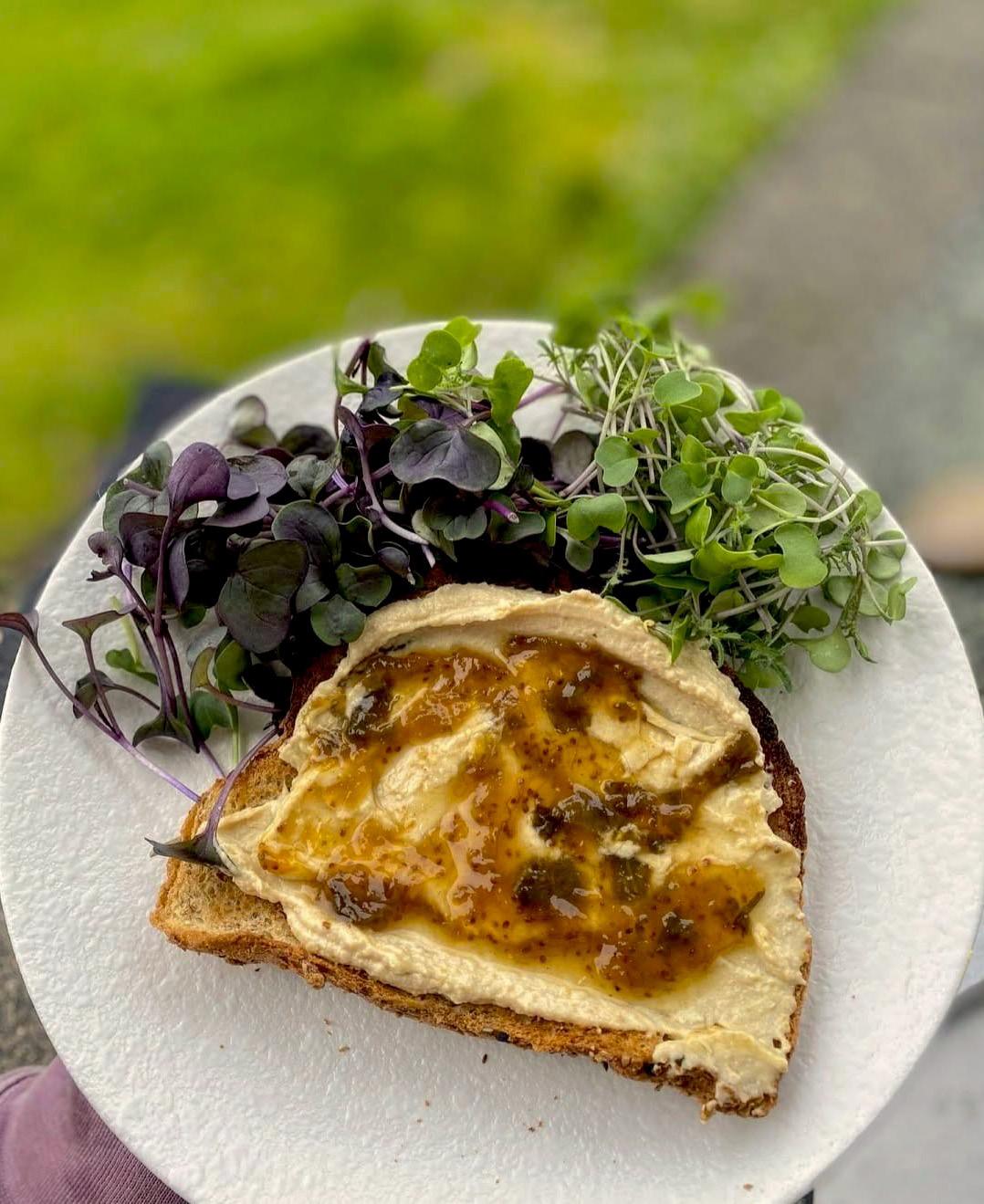
Old Roots, New Growth:
The Revival of a Farm Community in the Cowichan Valley
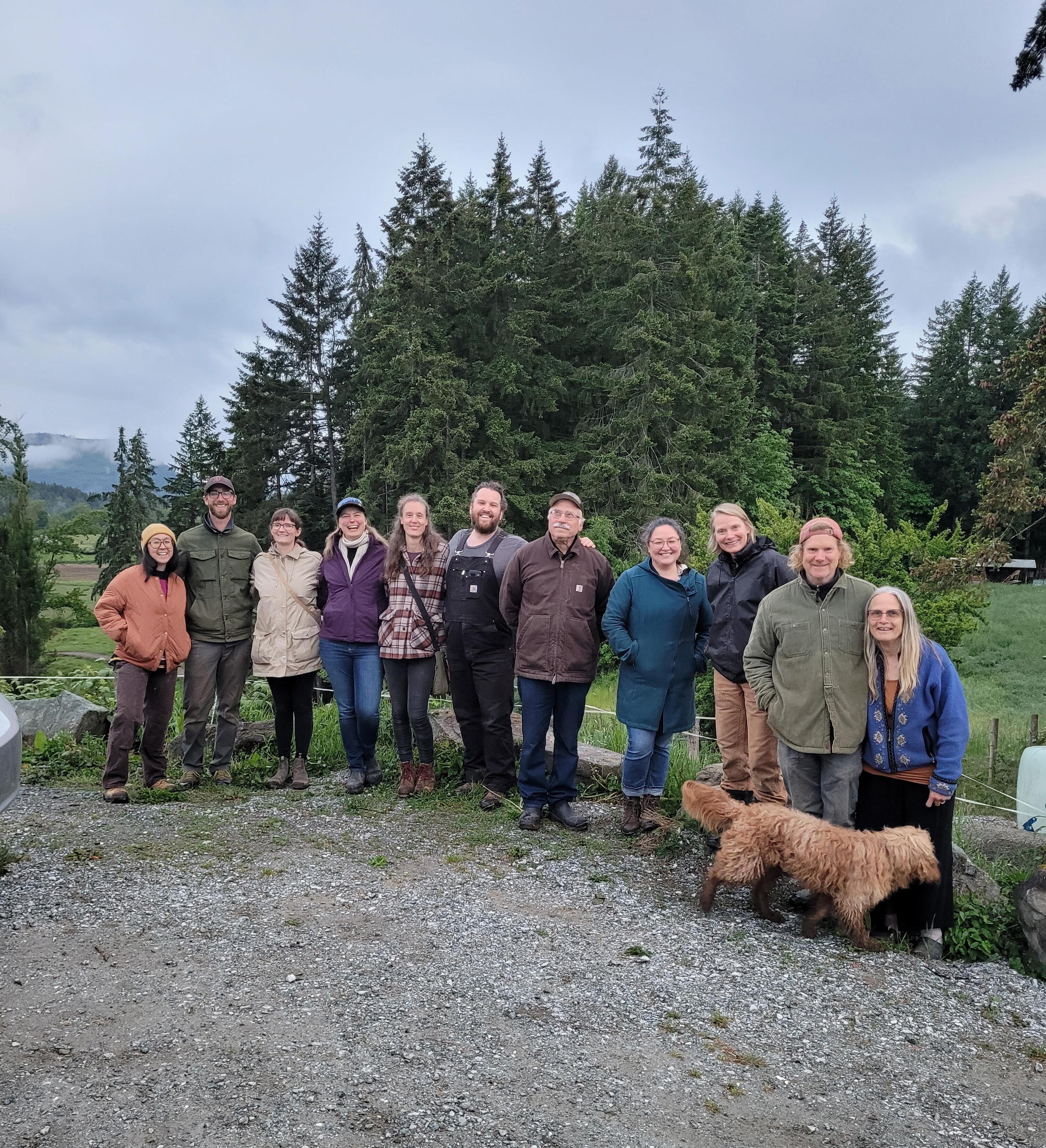
Across the Cowichan Valley, something remarkable is taking root. Quietly, steadily, and with the kind of hope only soil, sun, and sweat can offer.
The Cowichan Agricultural Society and Farmers’ Institute (CASFI), one of the oldest agricultural organizations in British Columbia, is undergoing a grassroots
young, first-generation, or returning to the land after time spent in cities, are joining forces with long-time producers to revitalize the organization and rebuild the networks that support local food production.
This isn’t just a story about farming, it’s about community resilience.
In a time of rising costs, climate instability, and global supply chain shocks, communities are turning their focus back to something essential: local food systems. With its fertile land and deep agricultural roots, the Cowichan Valley is uniquely positioned to lead the way, but revitalizing local agriculture requires more than just land, water, and good intentions. It takes relationships. That’s where the Cowichan Agricultural Society and Farmers’ Institute (CASFI) comes in.
Through winter meetings, summer farm tours, practical workshops, policy advocacy, and relaxed social gatherings, CASFI is setting out to rebuild the connective tissue between farmers across ages, sectors, and scales. These events are open, welcoming, and often kid-friendly. They’re places to swap techniques, yes—but also stories, seeds of ideas, and solidarity in the face of profound challenges. And they’ve sparked collaboration with other local initiatives, such as the Young Agrarians and Cowichan Green Community.
The conversations range from the challenges of growing elk herds, to pasture management and pollinator habitat, from greenhouse design to cover cropping strategies. But at the core of it all is connection: the simple, powerful act of showing up for one another in the shared work of growing food in the Cowichan Valley.
Importantly, CASFI isn’t just for large-scale farmers. It’s for anyone who cares about the future of food in this region. While full membership is available to active producers, the Society also welcomes Associate Members: non-farming supporters, home gardeners, food advocates, and community members who want to champion local agriculture.
These associate memberships help fund the work CASFI does, and offer a way for the broader public to be part of the movement.
And it is a movement.
Whether it's reviving old orchards, advocating for better water-use policy, or helping new farmers navigate startup costs and regulations, CASFI members are shaping what the next 150 years of agriculture in Cowichan will look like.
something real, rooted, and full of care.
If you believe in a food-secure Cowichan Valley—one where farms can thrive, soils are nurtured, and community ties are strong—now is the time to get involved.
To learn more, visit cowichanagriculturalsociety.org
Contact: secretary@cowichanagriculturalsociety.org
“Together, we can ensure that local agriculture not only survives but thrives.”

revival. Founded over 150 years ago in 1868, CASFI was once a central hub for knowledge-sharing, advocacy, and connection among farmers in the Valley. But like many rural institutions, its membership declined over the years, and its role faded from public view.
That is, until now. In the past year, CASFI has experienced a surge in membership and momentum. New farmers, many of them
You’ll find them all over, whether working the land in Glenora, at the Duncan Farmers’ Market, or swapping planting tips at the local farm tour events and social gatherings. You’ll find them raising chickens, tending to dairy cows, planting garlic, rotating crops, and supporting one another through the inevitable ups and downs of life on the land.
These are the people growing your food, stewarding your watersheds, and restoring your ecosystems. And in a world that often feels disconnected and digital, their work offers

by John Morton, photo supplied
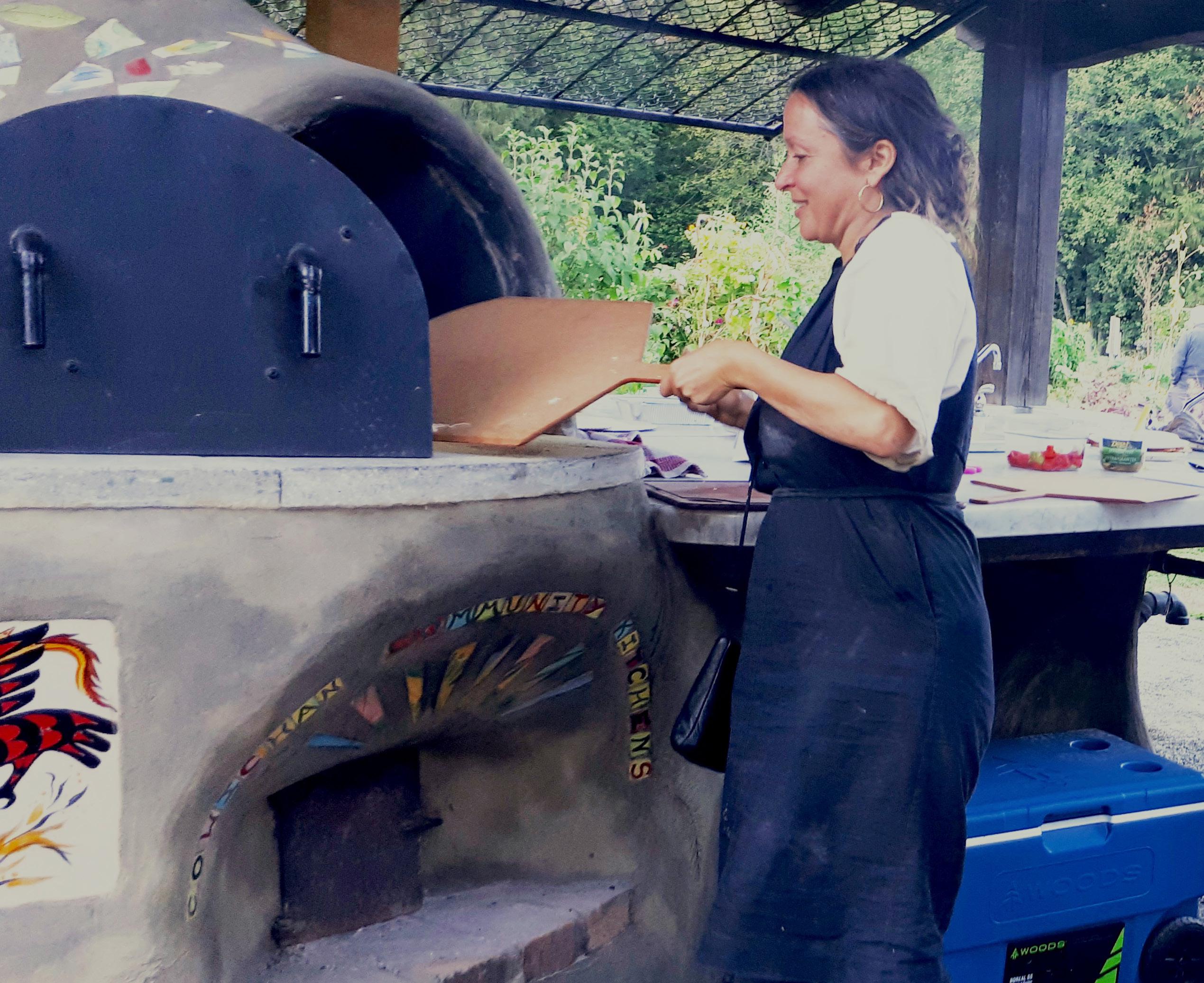
program, simply drop by. Did we mention we have nutritious food, snacks, the best coffee, and juice? You might just meet a new friend, have a great conversation, enjoy an activity, or learn a new skill!
For more information on the Cob Oven project, please visit: https://cgcf.ca/projects/the-cob-oven-project/
Or contact: Program Manager, Carol Kastelic at carol@ cowichangreencommunity.org
This program is funded by United Way BC and Government of Canada’s Reaching Home: Canada’s Homelessness Strategy.
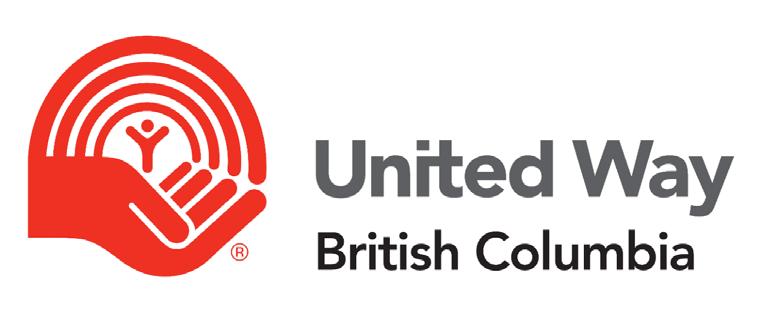
Cob Oven Youth Program
provides an accepting space for everyone
By Carol Kastellic, photo by James Chumsa
The Cob Oven’s ‘Food for Youth First’ program runs twice a week on Tuesdays and Thursdays from 12pm to 3pm at Centennial Park in Duncan, B.C. Young adults from the ages of 18 to 30 can drop in and have a safe, sober space that is non-judgmental and accepting of all.
As part of the program, participants are invited to take part in free workshops and activities such as candle and soap making, and sewing, where they can learn a new skill and create something that they can take home, such as a mended pair of pants, a potted house plant, or a bar of soap. There are outdoor games, including badminton, croquet, and even a 4-foot Jenga to enjoy with other participants. Board games and puzzles are also available, as well as art activities like beading and leather work.
The acupuncture workshops can provide some relaxation and healing to those who may want to experience it. This workshop is provided by a trained acupuncturist who is available to answer all
questions related to acupuncture.
The Narcan training workshop offered to the participants of the Cob Oven was very informative. The facilitators of the workshop were very knowledgeable, and the participants are eager to learn. The facilitators presented information on ways addiction can develop, how to identify an overdose, what someone would be experiencing and how to use a Narcan kit. Participants came away with a better understanding of addictions: how to recognize an overdose, how to properly give Narcan and what to expect following the provision of Narcan. As well, all participants were given a personal Narcan kit. The information was invaluable, so we plan to have another training session sometime this year.
Most recently, we have been enjoying new music by a local artist who has brought his music to the program for all to enjoy. He has freely shared his in-depth knowledge of how music is made and how songs are born.
If you fit in the age group and want to experience the Cob Oven






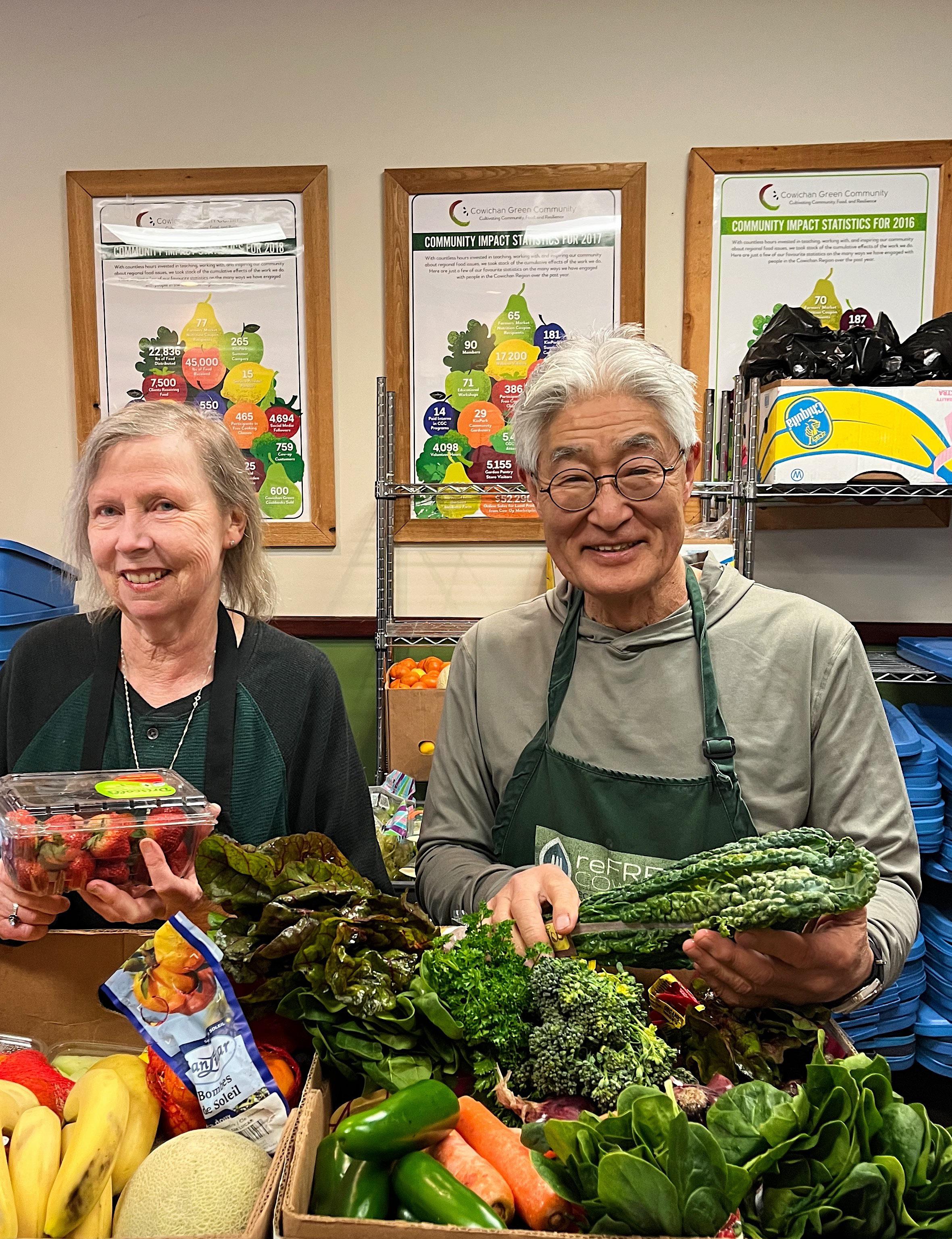
Food Recovery
Practices at the CGC
by Sean Burnett, photo supplied
In 2017, Dalhousie University and FOUND
Forgotten Food released a study on food rescue organisations in North America. In “Best Practices: Harvesting Potential from Forgotten Food” the general practices of food rescuers are given four categories: community-focused response and engagement, organizational structure, collaboration, and advocacy (pg 3); these categories contain a variety of common tasks and objectives undertaken by food rescuers across North America. In 2018, the Cowichan Green Community (CGC) launched its Food Recovery Program; seven years
later, the food recovery flourishes while following many of the practices proposed by the 2017 study. To help you understand what we do in CGC’s Food Recovery Program, I will be discussing the best practices identified by the study in relation to the practices at CGC.
By fostering relationships with community partners such as: grocers, farmers, restaurants, municipalities, and other foodrelated organisations, CGC discovers the unique challenges faced by the community and how to address them (pg 12). CGC’s Food Recovery Program receives most of our donations from local grocery stores. In the CGC’s seven years operating the Food Recovery Program, we have saved around 1.3 million lbs of quality surplus food that has been distributed to 16 service providers.
Organizational structure concerns the chosen incorporation and the consequent funding, protections, and requirements. CGC incorporates a charity foundation and a non-profit society; CGC’s Food Recovery falls under the non-profit society's umbrella. Consequently, CGC’s food recovery program is funded by grants, thus we keep a record of how much food is donated and where it goes to inform funders. CGC receives donated food, has it sorted by a mixture of staff and volunteers to ensure the best quality possible, and then sends it out.
Operating the food sort requires collaboration with food donors, volunteers, and the community partners through which we reach recipients. Volunteers play a crucial role in ensuring the food sorts work is done: we often have one or two volunteers aiding with the sorting, pickup and delivery. These volunteers come from many walks of life, and CGC is committed to ensuring everyone is welcome (pg 13). Our community partners for the food
Drought Assistance for B.C. farmers
recovery program are typically intermediaries between us and our recipients: we collaborate with these partners to ensure that the recipients are appropriately served (pg 13).
Our relationships within the community gives us a unique position to advocate for food security. The food recovery program isn’t directly involved with our advocacy efforts; however, one advocacy suggestion from the study is pushing for municipalities to understand food rescue as a form of waste management and thus to support it more directly (pg 14). The result would be a steadier form of funding for the CGC’s efforts than grants. Therefore, we would be able to expand the food recovery program.
The CGC’s community outreach has always been directed at raising awareness of the conditions underlying food insecurity. As I have argued before, people's livelihoods are susceptible to the kind of unfairness that creates food insecurity. Recognition of our natural dependency on community undergirds the identification of oneself with others, from which charity arises. CGC invites you to participate in our food recovery program to make a more connected, conscious, and food-secure Cowichan Valley.
Works Cited:
Brown et al. “Best Practices: Harvesting Potential from Forgotten Food.” Laurel Schut and Lindsay Clowes, Dalhousie University/ FOUND Forgotten Food, 2017.


The Government of B.C. has supports available for farmers during drought.
As water scarcity becomes more common, we’re working with B.C. farmers to provide tools to prepare, and financial assistance to help with recovery.
Learn more and apply for supports: gov.bc.ca/AgDrought

A View From Above
A Unique View Of The Island



by Ian Locke, photo supplied
In July of 2021, deep into our COVID lockdown, I had the incredible opportunity to fly private to Tofino. I couldn’t pass up the chance to pull my camera out and snap some once-in-a-lifetime aerial shots of Vancouver Island from less than 10,000 feet. Although modern commercial drones can achieve increasingly impressive aerial photography and videography feats, there’s nothing like the image captured by a great lens and a full-frame sensor.
I will never forget the experience of seeing the island I’ve called home for most of my life from such a perspective. Some of the areas I was able to see in great detail are places completely inaccessible by any road. Consider these selected images from my shoot a love letter to our truly unique corner of the map.
